
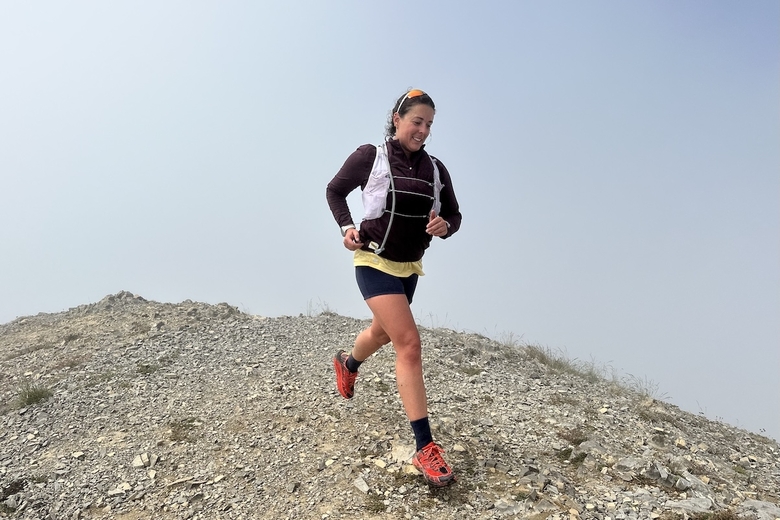
Switchback Travel (Emily Young)


Switchback Travel (Emily Young)
Price: $160
Weight: 1 lb. 3.6 oz. (unisex)
Cushioning: Maximum
Drop: 4mm (32mm heel, 28mm forefoot)
What we like: An iconic throwback with locked-in performance, energy return, and precision on tough terrain.
What we don’t: Platform is a little narrower than current Speedgoat 6.
See the Hoka Speedgoat 2
While the Hoka Speedgoat has never left the shelves (the line is now on its 6th iteration), Hoka rereleased the iconic 2 this season, in its original design and colorways. The Speedgoat 2 is the line's most beloved iteration thanks to the close fit, energetic rebound, locked-in build, and breathable mesh over a toothy Vibram outsole. I was personally thrilled to see it come back, and the rerelease is almost exactly the same as the original. This has become one of my favorite shoes this season, adaptable and secure on a range of terrain and supremely comfortable for long days. Below, I break down my experiences with the rereleased Hoka Speedgoat 2. To see how it stacks up to the competition, check out our article on the best trail running shoes.
The Speedgoat outsole hasn't changed much since the Speedgoat 2 was originally released, combining exposed EVA foam and tacky Vibram rubber. Like all the Speedgoat models I've tested, the 2 has an exceptionally grippy outsole that helped prevent slipping during loose and steep descents, but it doesn't feel like overkill on mellower terrain. The outsole has a standard multidirectional design, with angled chevron lugs for equal security climbing and descending. And while I managed to get these shoes totally caked in mud, they shed buildup exceptionally well and were fully clear within a mile. The longevity has been impressive so far, and I haven't noticed any of the rubber or foam degrading despite significant miles on steep, rocky terrain.
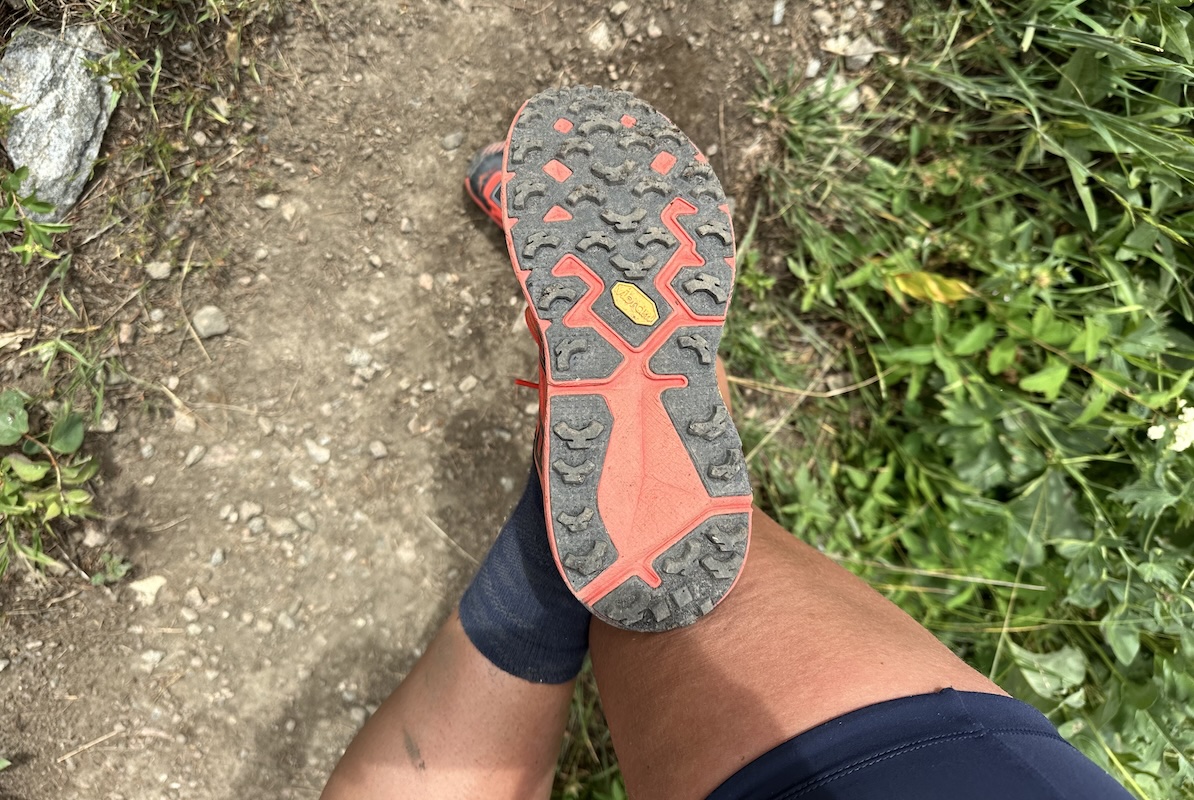
Individual runners have different stability priorities: some are more concerned with foot plant and platform width, others with fit and lacing tension. My primary concern is a secure fit around the upper, which seems to impact me more than platform width. If I have a solid heel lock, ankle security, and little movement inside the shoe, I am a lot more confident. Here, the Speedgoat 2 excels. The upper has more material than my performance-oriented Salomon Pulsar S/Lab 4, but not as much as a highly cushioned shoe like the Brooks Caldera 8. This makes them a versatile shoe with a nice blend of comfort and stability, and I wear them on both mellow hikes and technical trail runs.
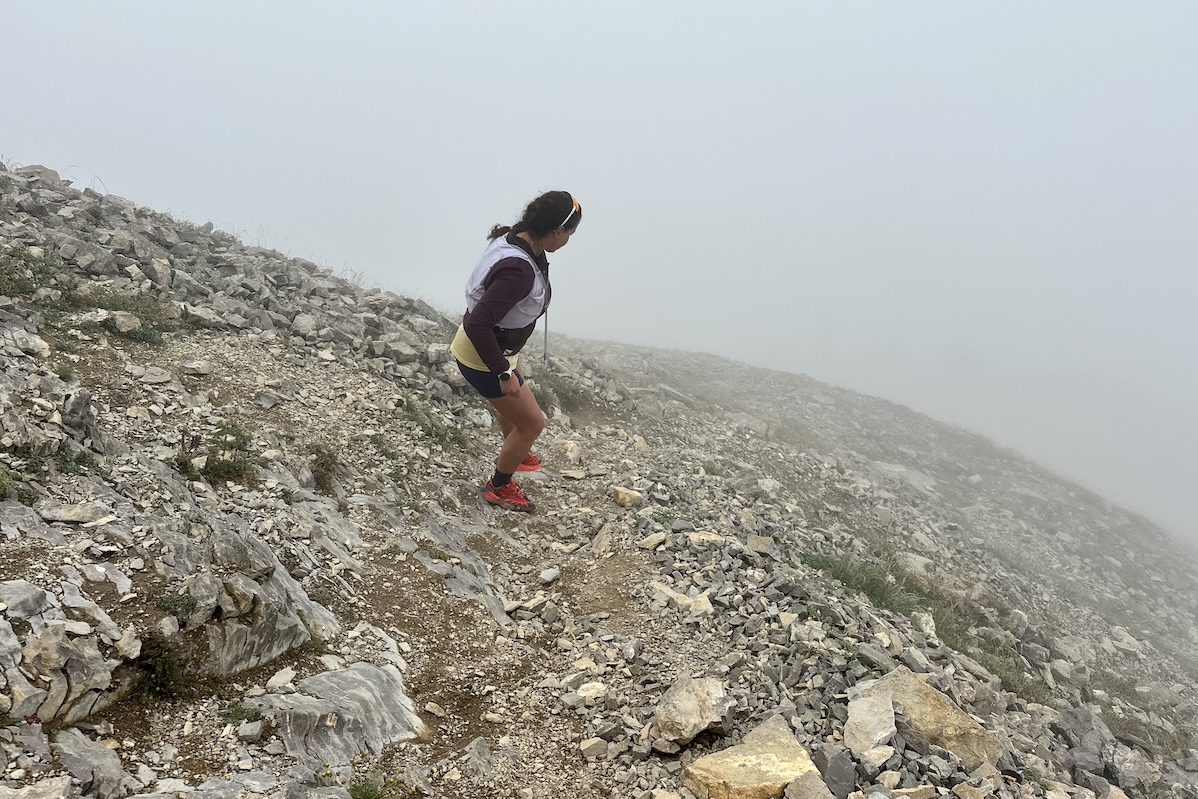
The tongue stays in place well on the Speedgoat, and the forefoot lock is impressive even without tightening for technical descents. You can lace the shoe with the optional deeper offset eyelets, but I survived a steep 3,800-foot descent without any adjustments. The fit is more secure through the heel than my recent test of the Hoka Challenger, which is impressive considering these are a unisex shoe and I have low-volume feet. That said, the Speedgoat 2 platform is narrower than the current Speedgoat 6, and runners prioritizing a wider base might find the narrow build paired with the 32-millimeter heel stack to feel wobbly on technical or speedy sections.

I appreciate a higher cushion in my shoes these days, and the 32-millimeter heel / 28-millimeter forefoot stack is well aligned with what I'm looking for. My feet feel protected from sharp shale during multi-hour efforts, but I still feel nimble and don't lose all ground feel. The Speedgoat 2 doesn't have a rock plate, but I've found a shoe with this much cushion doesn't usually need one. The EVA midsole is a forgiving combination of cushion and spring, and I'm comfortable on everything from fast runs on rocky terrain to carrying a loaded pack for multiple hours. The 32-millimeter heel stack is quite a bit less than the 40-millimeter heel stack on the Speedgoat 6, which says a lot about the progression of max-cushioned shoes in the last 8 years. The Speedgoat 2 looked ridiculously tall when it first came out, and now its midrange for this style.
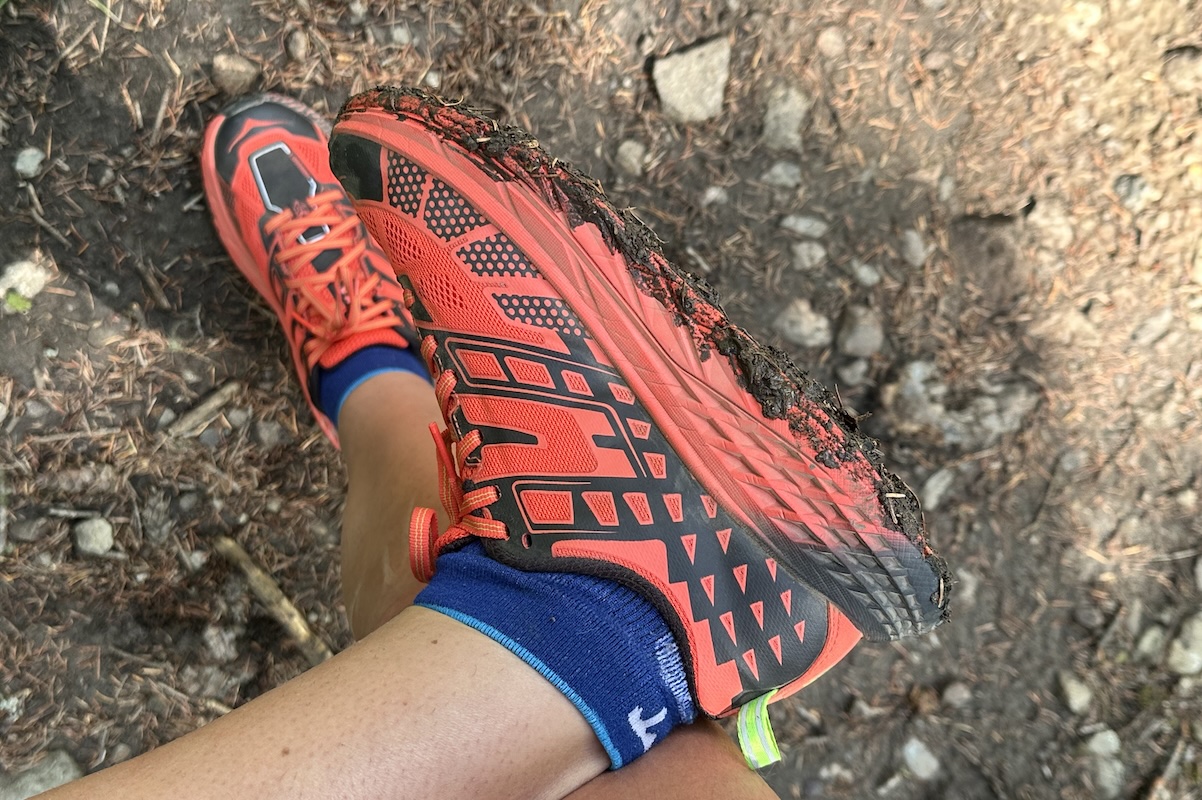
The Hoka Speedgoat 2 has a stellar combination of reasonable weight, breathable upper materials, and springy cushion that doesn't go overboard—that's part of what made them so popular and influenced this rerelease. The fit is accurate enough that I don't have to accommodate with overly tight laces, and the heel counter has the right amount of structure, unlike Hoka's Clifton 10, which has such an exaggerated heel tab that it starts to bother my Achilles. The 4-millimeter drop is one of my favorites for trail shoes like this—enough to ease the strain during steep climbs and descents, but not too much where I feel extra effort. I did develop a hotspot under one arch during a particularly grueling trek with a lot of rocks and shifting surface, which is something to keep an eye on.
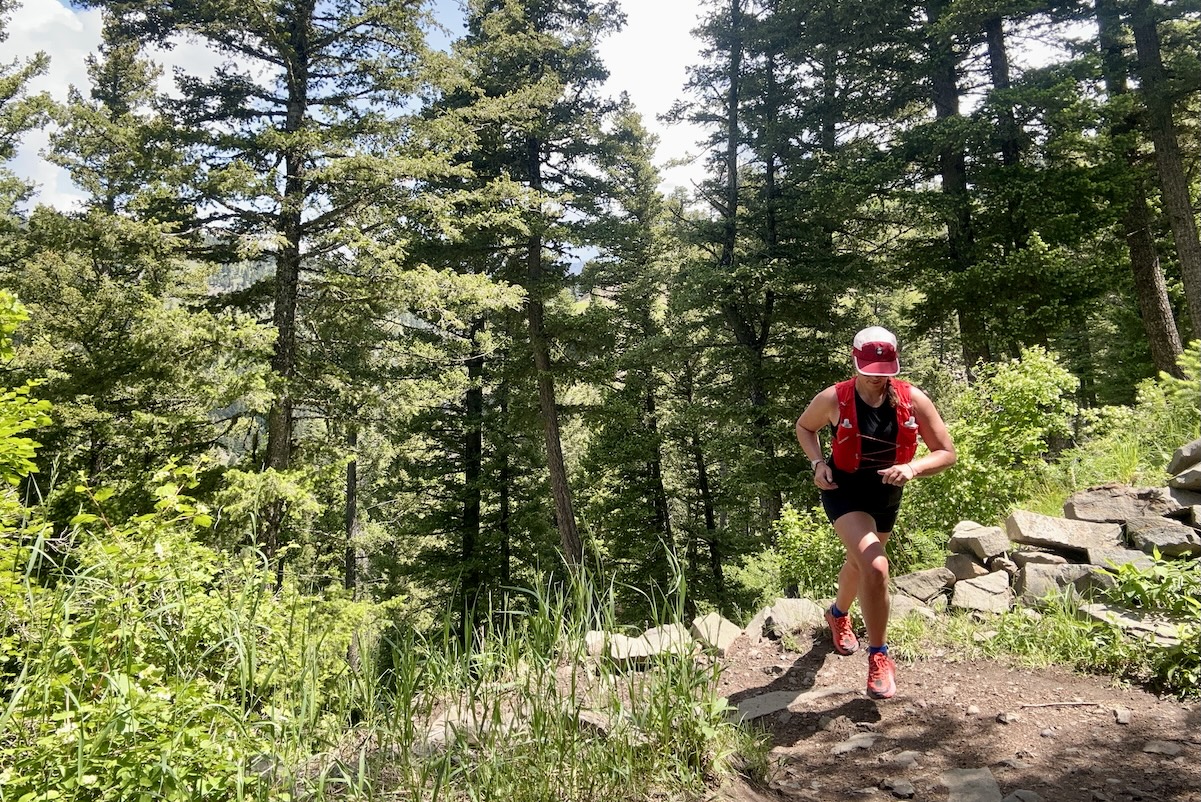
At 1 pound 3.6 ounces per pair, the Speedgoat 2 is fairly aligned with other maximum-cushioned shoes. The Hoka Challenger 8 clocks in at 1 pound 3.4 ounces for the men's, while the comfort-oriented Brooks Caldera 8 weighs a little more at 1 pound 5.2 ounces. These aren't the absolute lightest shoes out there, and I could feel the 2-ounce difference in a recent test of the lightweight Salomon Pulsar 4. But the Speedgoat 2 doesn't feel heavy, and the build feels nimble thanks to the lean upper combined with a springy midsole.

I've rarely had an issue with Hoka durability, and the Speedgoat 2 rerelease feels no different. The lugs are still aggressively sharp after a month of consistent use, and even the large exposed section of EVA foam on the outsole isn't pocking out like some of my other shoes. The midsole and interior feel stable and haven't compressed or collapsed, and the toe cap and overlays are holding strong. The upper mesh is a midweight thickness that hasn't developed any abrasions or holes along high-wear areas like the collar, and I give these shoes a strong chance of hitting the 500-mile metric without excessively degrading.
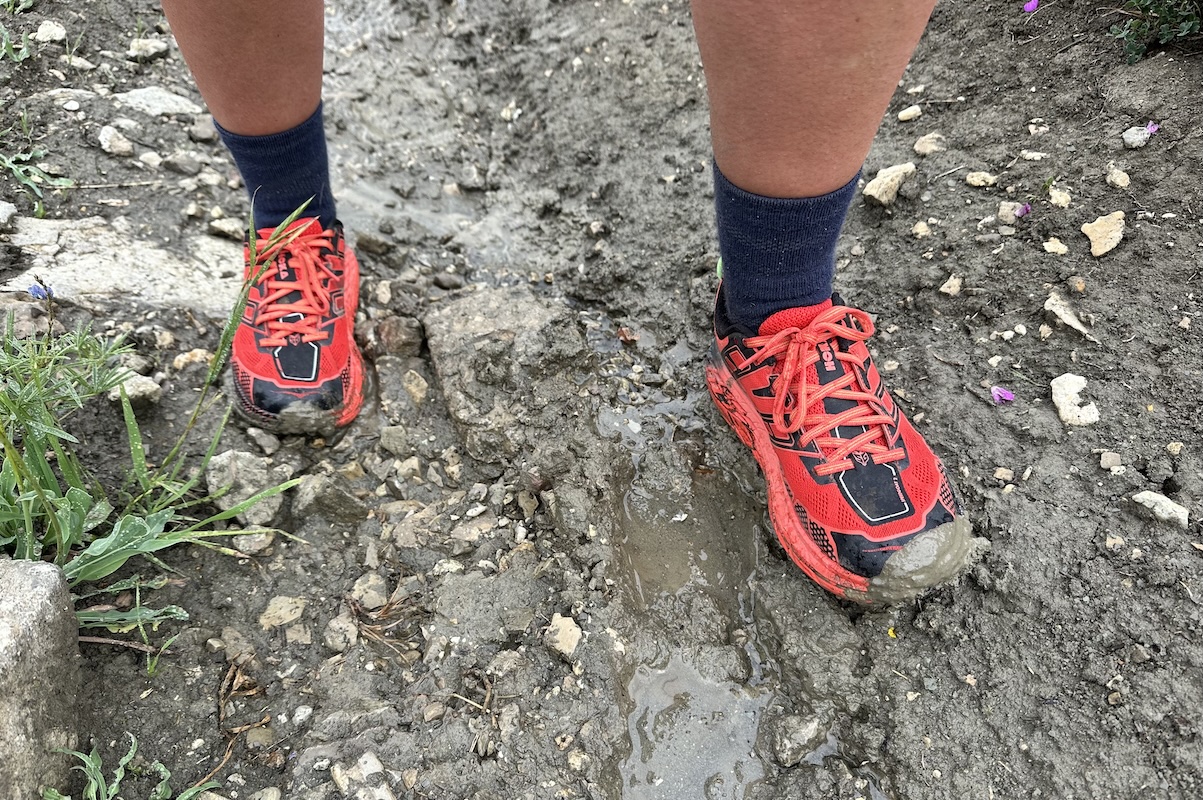
I've found the recent Speedgoat models to have a narrow forefoot paired with an overly padded collar, resulting in an odd fit that feels tight in the front but lacks security in the heel. This isn't an issue with the Speedgoat 2, and I love the stretchy, breathable, close-fitting mesh. They also have a single-layer overlay that doesn't add much weight, but helps maintain the upper structure. I was a little leery of the unisex sizing here, but was able to wear my normal size. Keep in mind I have low-volume feet, and the fit of the Speedgoat is decidedly narrower than other models. People with wider feet might find them constricting, but Hoka offers the Speedgoat 6 in wide sizes (and both men's and womens), which might be a better fit for some folks.

My review above covers the unisex Hoka Speedgoat 2 rerelease, which doesn't come in a women's-specific or waterproof model. But the line is also available in the latest Speedgoat 6 for men and women ($155, 1 lb. 3.6 oz. for men and 1 lb. 0.4 oz. for women) and Gore-Tex men's and women's ($170, 1 lb. 5.2 oz. for men and 1 lb. 2 oz. for women). You can also try the Speedgoat Mid GTX, which has a tall collar that adds boot-like protection to the Speedgoat base and an ankle collar similar to a built-in running gaiter (these weigh 1 pound 6.8 ounces for the men's, 1 pound 3.6 ounces for the women's, and cost $180). Finally, Hoka makes the Speedgoat in a kids' version, which has a decent size range and costs $110.

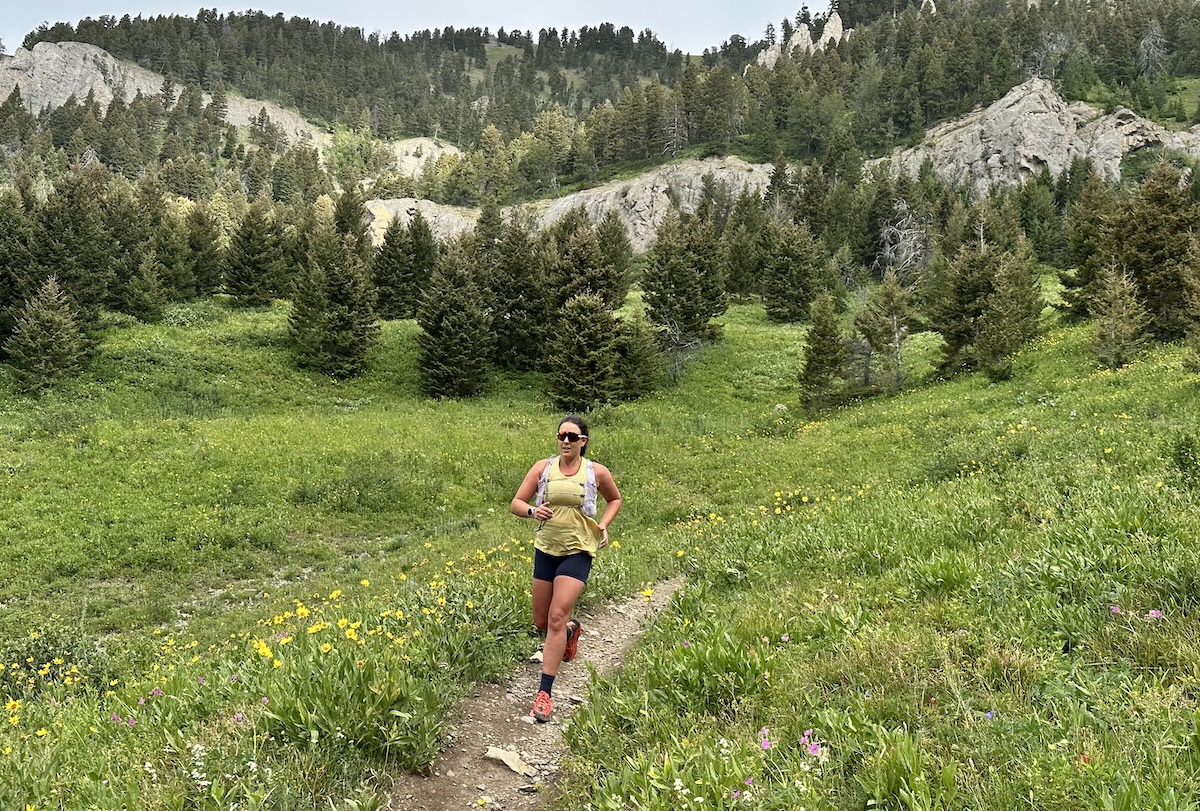
| Shoe | Price | Weight* | Stack Height | Drop | Cushion |
|---|---|---|---|---|---|
| Hoka Speedgoat 2 | $160 | 1 lb. 3.6 oz. | 32mm heel / 28mm forefoot | 4mm | Maximum |
| Hoka Speedgoat 6 | $155 | 1 lb. 3.6 oz. | 40mm heel / 35mm forefoot | 5mm | Maximum |
| Brooks Caldera 8 | $150 | 1 lb. 5.2 oz. | 38.5mm heel / 32.5mm forefoot | 6mm | Maximum |
| Saucony Xodus Ultra 4 | $170 | 1 lb. 5 oz. | 36mm heel / 30mm forefoot | 6mm | Maximum |
*The listed weight is for the unisex or men's version of each shoe.
The Hoka Speedgoat 2 shot to the top of my shoe rack this season, offering a delightful combination of cushion, energy return, and a secure fit that I can wear for fast runs as well as long slogs. For runners looking for more cushion with a similar high-traction outsole and performance, the obvious choice is the newest Hoka Speedgoat 6. The 6 weighs the same as the 2, but has a whopping 40 millimeters of cushion under the heel and a more padded collar. I like the leaner upper on the 2, but the 6 does offer more cushion around the top of the foot. It's also available in a women's-specific model (1 lb. 0.4 oz.), while the 2 is unisex.

The Brooks Caldera 8 has been another favorite for me this year for long-distance comfort. I love the wide platform, roomy toe box, and increased stability thanks to the wide base. The Caldera isn't a super nimble shoe, but for long days where I'm combining hiking and running, it's a good bet. Finally, Saucony's Xodus Ultra 4 is another well-cushioned trail shoe with a recently updated build through the upper and outsole. The Xodus improved the rubber compound and now has a similar Vibram design to the Speedgoat, with even toothier lugs. The 6 millimeters of heel-toe drop adds propulsion, though the added 1.4 ounces can make the shoe feel less energetic than the Hokas.
Back to the Hoka Speedgoat 2 Review See Our Trail Running Shoe Guide